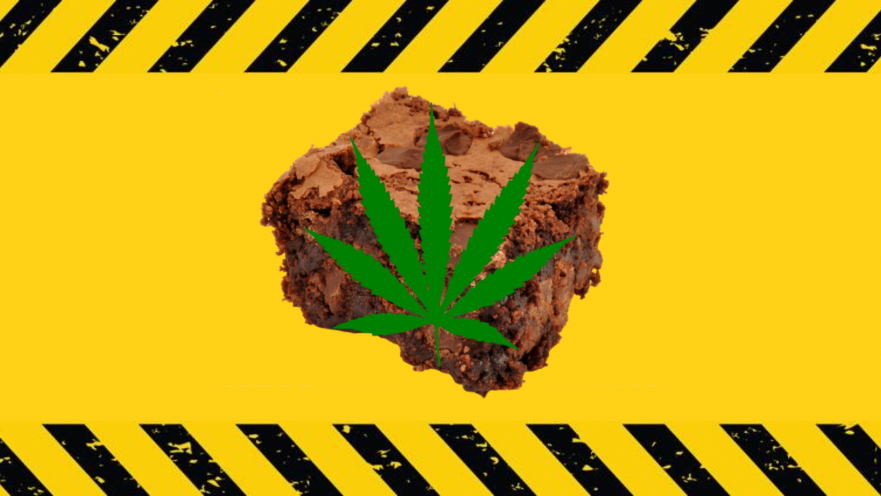After a friend recently told me about her brother whose life has completely changed after eating cannabis edibles as a teen, it inspired me to look closer into this matter.
Obviously, cannabis can be consumed in many different forms. It can be smoked either through a joint, inhaled via vaping or a bong but also ingested by taking edibles. These edibles come in cookies, lollipops, gummy bears or chocolate bars infused with THC (tetrahydrocannabinol) which in contrast to CBD (cannabidiol), the anti-inflammatory component, is a component that triggers psychoactive responses. The amount of THC, if taken too much of it, is what potentially causes a “cannabis-induced psychosis” which develops when experiencing paranoia, panic attacks and hallucinations- just to name a few.
Nowadays, many teenagers but also older adults enjoy cannabis edibles (self-made or ordered online). It’s become quite popular; however, the risk of overconsumption and other health dangers exist. Especially the danger of being accidentally ingested by toddlers and younger children happens when cannabis edibles are packed as candies. Just three months ago, in April, there was a case in Utah where two children, ages 5 and 11, needed to be hospitalized because they ate medicated Nerd ropes that contain 400 mg THC. It was accidentally given to them at a food bank. This brought a lot of outrage since they should have not been handed to them in the first place and if 15 – 45 mg THC is the normal amount that is prescribed to medical cannabis patients then how can a child handle so much of it?
The amount of THC is what influences its impact on the person consuming it. What makes these edibles also dangerous is the aspect of inaccurate dosage (too high or too low) amount of THC and inappropriate labeling on the edible package itself.
According to Dr. Lawrence Loh, a faculty member from the Dalla Lana School of Public Health at the University of Toronto, Canada, overconsumption is more possible with cannabis edibles since- in contrast to smoking and inhaling cannabis- the effects of ingesting cannabis do not become noticeable until about thirty minutes to an hour later (see also the author manuscript from 2016 because they have to be digested first in order to get absorbed and enter the bloodstream. After three hours, the blood levels of THC are the highest, but the aftereffects can stay till more than six hours.
The risk of overdose, in the case of edibles, emerges when the user starts to consume more and more because the effect or “high” does not come as fast as they expect. And the high with edibles is longer lasting than with smoking or inhaling it. Another difference between smoking cannabis and ingesting it is that the adverse health effects are much worse with edibles based off the research from Dr. Nora Volkow, the current director of the National Institute on Drug Abuse, due to it causing more severe side effects, such as drowsiness, confusion, vomiting, anxiety attacks, psychotic episodes, respiratory depression, etc.
Then you have the increased risk of getting a heart attack by the elevated heart rate and higher blood pressure levels. Older adults who take cannabis edibles are apparently more at risk getting a heart attack but also tend to become easily impaired in their cognitive abilities.
There are two things that mainly determine how easy someone can overconsume on cannabis edibles: a person’s metabolism and the ingredients of that specific cannabis edible being consumed. Other factors come into play as well, such as: “sex, weight, diet, and tolerance to cannabis.” Nevertheless, specialists warn that those who have never experienced taking cannabis might react to it worse than others who are familiar with it.
What is a bit striking is that the legalization of recreational cannabis is linked to higher numbers of “overdose” incidents. This can be demonstrated with the example of Colorado. After its legalization of cannabis, more cannabis became accessible and between 2013 and 2017 the state poison control center reported 70% more incidents where children accidentally came in contact with cannabis. This is just one example that indicates how serious the situation is.
Indeed should be more awareness that cannabis edibles need to be enjoyed with a lot of caution and that they can be dangerous to one’s health. At the same time, cannabis edibles need to be controlled better in terms of quality assurance, making sure they are packaged in a safe and childproof manner with an appropriate warning of its contents.

